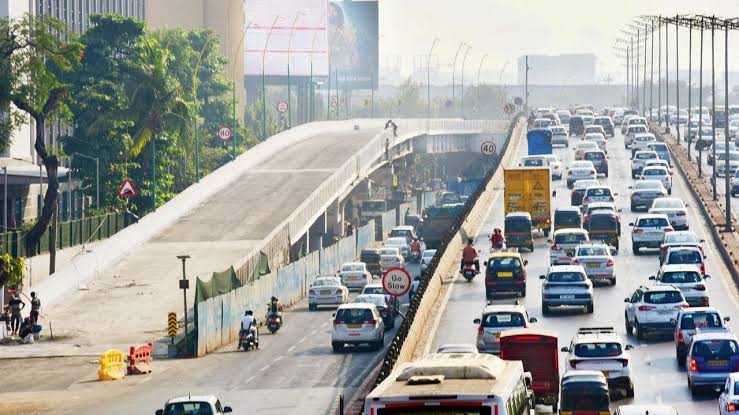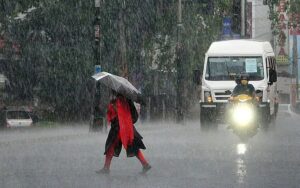Flyover Connecting Mumbai Airport To Bandra Will Open For Public This Week

Commuters commuting from Mumbai’s airport terminal-2 (T2) to Bandra via the Western Express Highway (WEH) will soon have access to a newly constructed flyover, which is scheduled to be inaugurated by the Mumbai Metropolitan Region Development Authority (MMRDA) on Saturday or Sunday. The inauguration follows criticism from Shiv Sena leader Aaditya Thackeray, who emphasised the three-week delay in activating the overpass.
According to media reports, MMRDA has verified that the final touches on the domestic airport overpass will be done by late night, setting the stage for its ceremonial inauguration. The development of the domestic airport flyover has been extensively chronicled, providing insight into its construction and progress. The flyover attempts to improve traffic flow in the area.
The existing traffic gridlock at the T1 intersection, particularly during peak hours, has posed a continuous difficulty for commuters. Traffic jams, exacerbated by the enormous volume of traffic, frequently cause long delays. Notably, commuters commuting from T2 via the Sahar elevated route frequently experience delays at the T1 junction as they approach Bandra.
The newly constructed flyover, which runs parallel to the present one, has two lanes and a width of 8 metres, stretching for 615 metres. The flyover, which is specifically intended to improve traffic flow from T2 to Bandra, is expected to minimise signal delays, improving overall traffic management efficiency.
The flyover was designed to meet airport funnel zone regulations, with a focus on optimal traffic routing and safety protocols.
Flight delays at the Mumbai airport:
As the day passes, aircraft taxiing and takeoff at Mumbai’s Chhatrapati Shivaji Maharaj International Airport (CSMIA) continue to be delayed. These issues go beyond the commonly reported justifications for air traffic control (ATC) delays and congestion that passengers frequently hear during flight delays.
Lack of parallel taxiways:
One of the primary reasons for the increased wait times at CSMIA is the lack of parallel taxiways. Currently, the airport has only one taxiway, which serves as a bottleneck for planes departing from several docks and terminals. As a result, the process of dispatching aircraft for takeoff is hindered, resulting in delays.
Delayed Departure Process:
Another contributing problem is the delay in automating the ATC’s departure process. While arrivals are automated, departures rely significantly on human controllers’ cognitive abilities. Automation of the departure procedure is expected to be completed in the following months.
Flights Are Delayed:
Delayed flights contribute significantly to the increased wait times. In recent years, around 65% of inbound planes to CSMIA have encountered delays. Airlines frequently overstate the block time, or expected journey time, to boast about arriving ahead of schedule.







